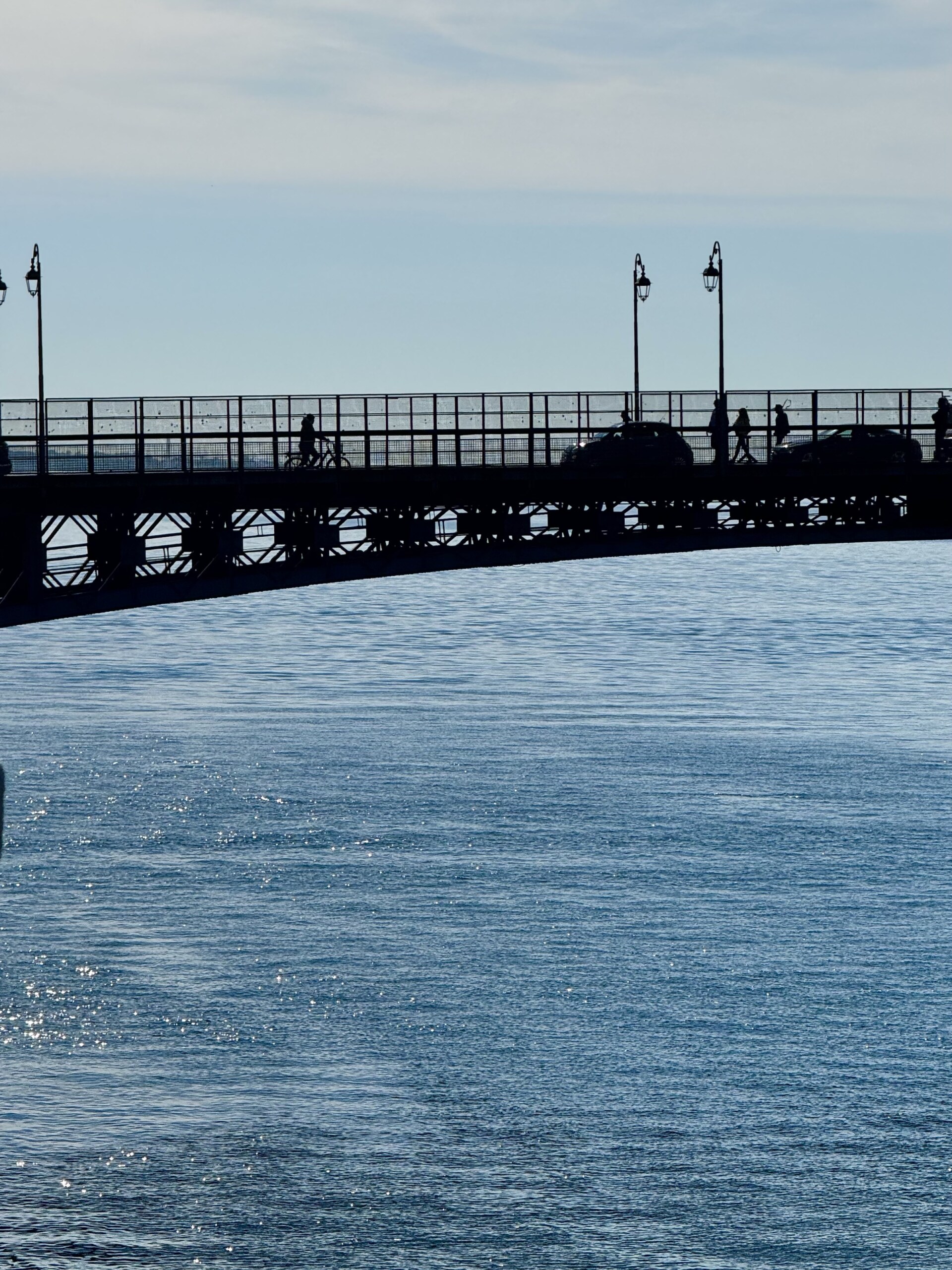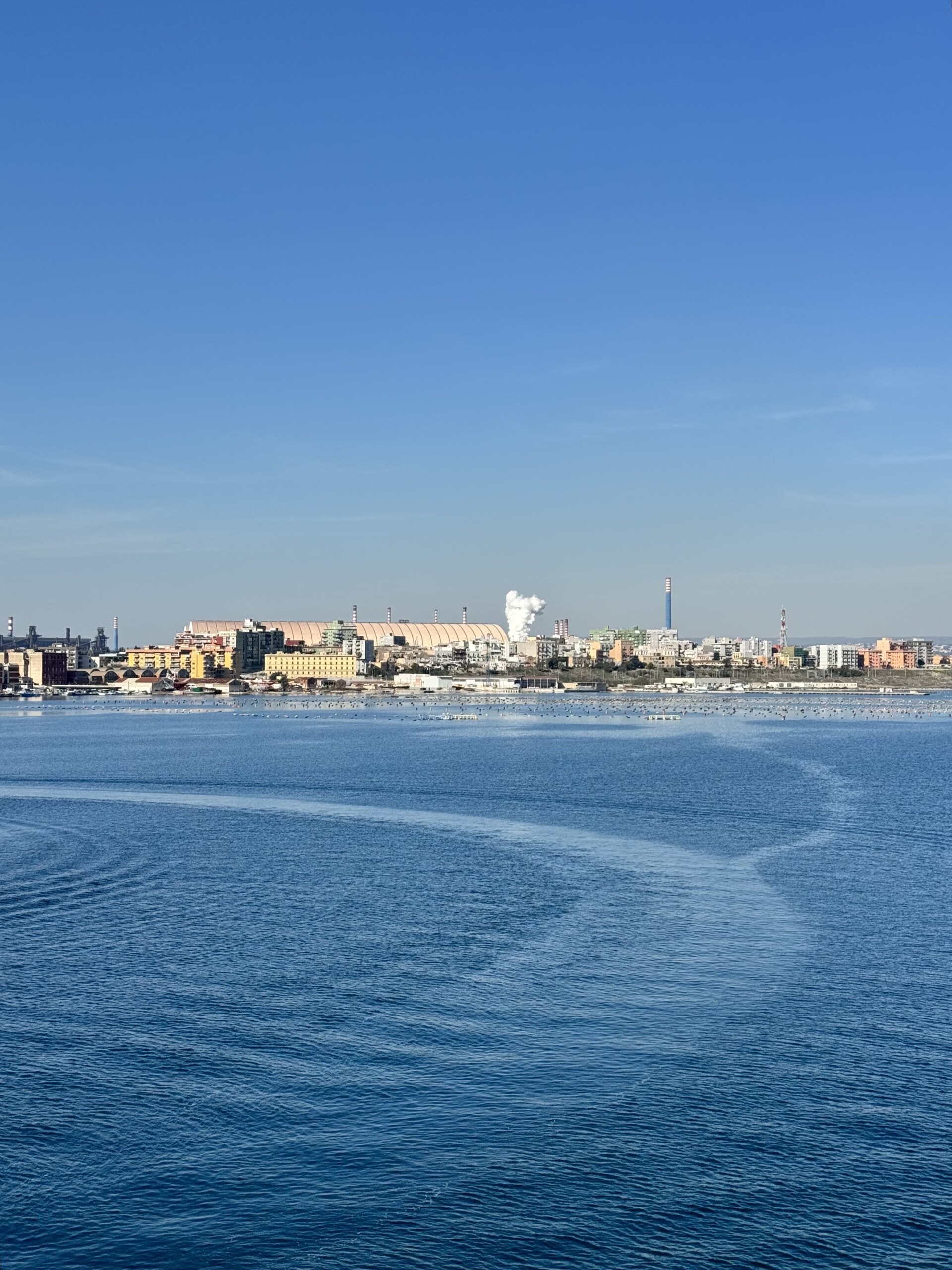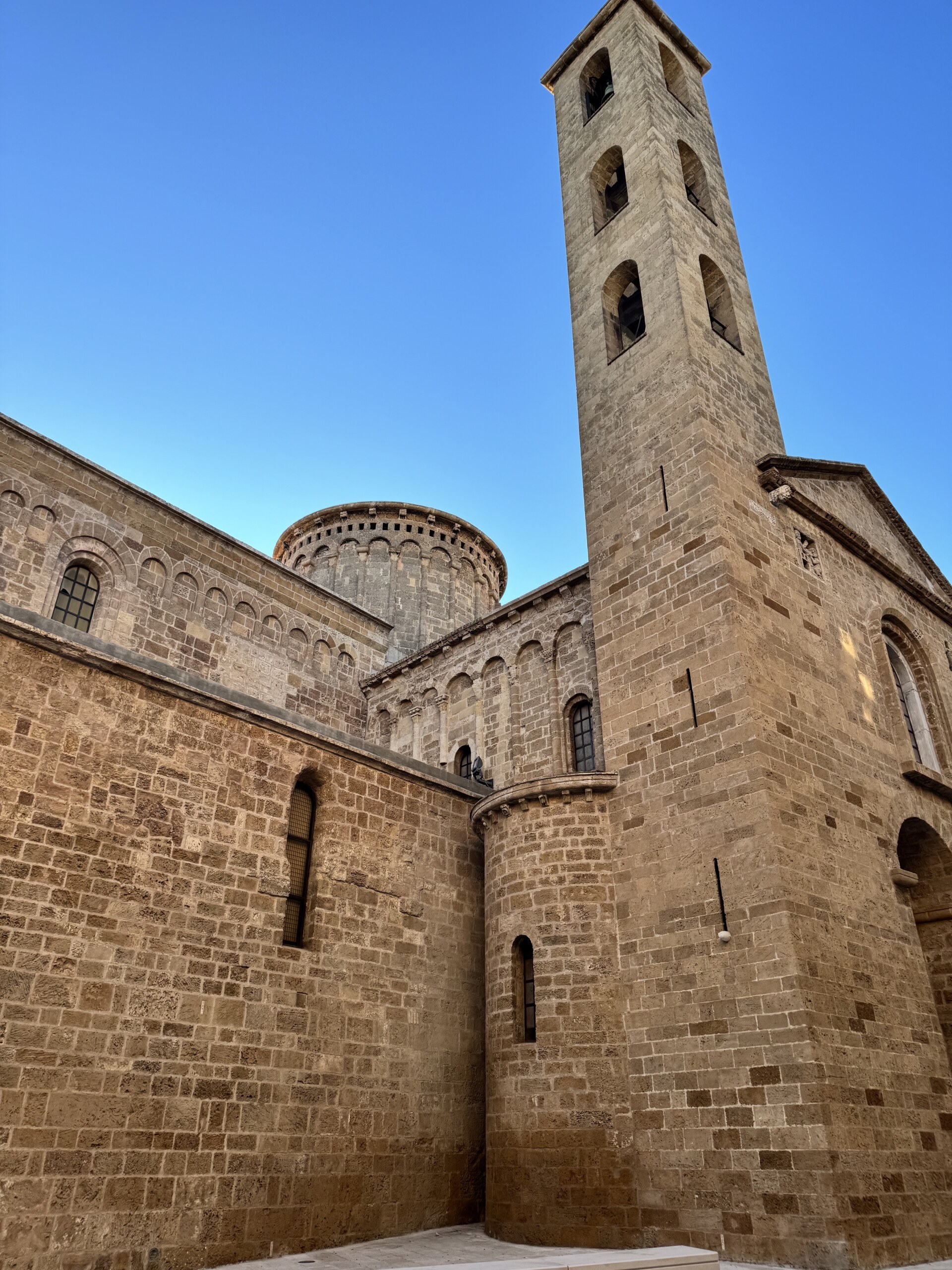Taranto is not the romantic Puglia visitors have been clamoring for in recent years. But it is a city in bloom and one with the potential to become a creative capital of southern Italy–if given the right energies and investments.
The City of the Two Seas–so called because it overlooks both the Ionian Sea (the Great Sea) and an inland body of water (the Little Sea), separated by a canal over which a swing bridge is built–has been plagued by a one-sided narrative that has only ever seen it as the home to Ilva, once Europe’s largest steel mill. Founded in 1961, this full-cycle steel plant still blankets local areas with a fine layer of red iron-ore dust, makes nearby waters unsuitable for seafood farming, and has given the city cancer rates that are among the worst in the world. Here, expansive sea views (that have nothing to envy of neighbors Porto Cesareo or Gallipoli) create a particularly stimulating visual contrast with the blast furnaces and structures of the factory–an almost dystopian picture.
Yet those who live in Taranto and who know the city better are aware that it’s more than just Ilva. The 200,000-large city is a lively, vibrant place, full of contemporary initiatives especially when it comes to the visual arts, and since 2019, it’s been included in the list of Italian Cities of Art, another step in overcoming its stereotype.
Taranto, along with similar cities holding vast untapped potential, serves as a prime example of fertile ground for development–little consumed by the frenzy of globalization, haste, and high costs of living. It’s in contradictory places like these that a sense of community and fresh initiatives flourish and breathe new life. And, as more and more young people choose the city for its affordability, Taranto is certainly embarking on a new chapter, channeling its energies towards the promotion of creative pursuits.
THE GENETICS OF TARANTO
The very genetics of Taranto speak for themselves. Think of, for example, the historical attractions in the old town: the Baroque Cathedral of San Cataldo holds its own against the better-known churches of Lecce, Bari, or Trani. The Aragonese Castle, also known as the Castel Sant’Angelo, that stands at the edge of the old town, facing the National Archaeological Museum of Taranto (MArTa), makes for an evocative walk on the small island connected to the mainland by a revolving bridge and the Ponte di Porta Nuova. Also numerous are the historic palaces–see Palazzo Pantaleo, Palazzo Brasini, and Palazzo de Beaumont Bonelli–and the art galleries.
Some may compare the Puglian city to Naples, both in vibes and in architectural and historical similarities: Ilva finds its Campanian counterpart in the disused site of Bagnoli. In Taranto there is, as in the capital of Campania, an excavated hypogea, underground rooms used as places of worship or burial. In the Cathedral of San Cataldo, you can admire the Chapel of the Blessed Sacrament in which several sculptures by Giuseppe Sammartino, the artist of the Veiled Christ of Cappella Sansevero in Naples, find their home. Taranto too links its history with mythology and mermaids: for Naples, it’s Partenope; for Taranto, Skuma, a beautiful local girl whose name translates to “foam” in dialect. The legend tells of a fisherman’s wife, who, in a moment of weakness, betrays her husband. He throws her into the sea in a fit of rage, but she’s saved by the mermaids, who, fascinated by her otherworldly beauty, crown her their queen and name her Skuma because she was carried by the waves.
And though many know the islands of Naples–Ischia, Capri, and Procida–few know of Taranto’s three, the so-called Cheradi Islands–San Paolo, San Pietro, and San Nicolicchio. The latter was called u’ squegghie (the rock) by fishermen and once housed a Greek Rite abbey dedicated to St. Nicholas of Myra; the island, however, was demolished with the expansion of the cargo port.

THE ONSET OF INDUSTRY
Of course, a city like Taranto cannot exempt itself from its industrial history: the steel mill was officially opened in 1965, and as was the case with Naples’s Bagnoli, provided jobs for a remarkable percentage of residents and non-residents; at its height, the factory employed more than 10,000 people. It was one of the jewels in the crown of the postwar economic boom, supplying not only northern Italy but half of Europe with iron and steel–bringing with it, however, the flipside of the coin. The Pugliesi are certainly familiar with the environmental disaster caused by the plant and the resulting number of deaths and illnesses: as a result of workers’ exposure to asbestos and citizens’ exposure to the toxicity of waste in the air and sea, Taranto has seen a surge in deaths from cancer, lung cancer and cerebrovascular cancer; lung cancer death rates here are 30% higher than average and those from respiratory illnesses reach as high as 50% above average.
In 2012, Ilva was sequestered by the judiciary for “serious environmental violations”, but it was somewhat of a faux seizure for everyone was aware, and had been aware for many years, of the issues arising from the plant. It was called “an Italian-style mess” by the government and newspapers.
Today, Ilva is by no means shut down, but it has drastically decreased production; of the five blast furnaces originally in operation, only one continues today. It is in crisis, but the mill is also too important and strategic to let fail, so it remains in a political and bureaucratic limbo. On the one hand, public opinion would like it to be decommissioned, as has already happened with Bagnoli, and on the other hand, there are too many interests at stake, especially at the political and economic level–not to mention that dismantling such a place would mean investing a monstrous amount of money.
I’ve been to the factory a couple of years ago, and its immense size, reddish colors, and blast furnaces are really impressive–in the way that it makes you feel as if you’re traversing a parallel world, a kind of dystopian metaverse without time or place.

BEYOND THE FURNACES: A LOOK TO THE FUTURE
In recent years, the city has been working hard to break away from the narrative that sees it as a dangerous place, home to petty crime, neglect, and decay. And what better way than by devoting itself to art?
Visitors to Taranto must go to the aforementioned Archaeological Museum, one of the most important and richest in all of southern Italy, as well as MoSa, the historical craft exhibition at the Maritime Military Arsenal. Then there are the art galleries. La Saletta dell’Arte is a modern art one that has hosted important pieces by the likes of Kristina Milakovic and Mario Schifano, while GATA, run by brothers Domenico and Andrea Sciroccale, is a contemporary art gallery, residency, B&B and bar. Art House Action is both a modern and contemporary art gallery and an auction house, and Galleria Margherita specializes in modern art and antiques. These are all gathered on the southeast side of the city.
Initiatives related to artistic production, and its promotion in the territory, are not to be outdone: in July, 2023, the city became an “island of the arts” thanks to the eyeLAND event promoted by Phest, a cultural association that has been organizing the International Festival of Photography and Art in Monopoli for eight years, in collaboration with the Municipality of Taranto. The almost two-month-long festival saw the city streets enriched with street art works, photographic and design projects, and sounds collected from the streets transformed into music, poetry, contemporary art, and theater.
Taranto is also the scene of Mas Week, which held its fourth edition in 2023: the festival of Architecture, Design, and Contemporary Art organized by the Modern Apulian Style architecture and engineering firm, the City of Taranto, and Ella APS.
Also held here is the MAP Festival on music and architecture, the Taranto Jazz Festival, the Summer Gardens Festival, I Due Mari Winefest–in short, so many events that Taranto has been given yet another nickname: “the city of festivals”.
Taranto proves to be a living city, with a potential that, if expressed, would make it one of the most visited cities in Puglia, if not in Southern Italy. There’s potential to do justice to its beauty without stopping only at the dark glories of its industrial past. Many are afraid of investing in such a polluted place and, of course, to ignore what it has been and still is would be unfair, but this does not mean that the city cannot untether itself and move beyond, to a future less locked in the stale Taranto-Ilva dichotomy.

La Cattedrale di San Cataldo








